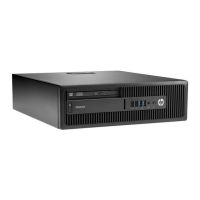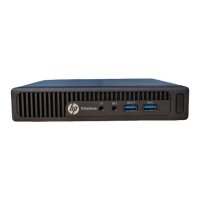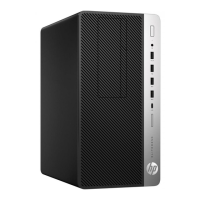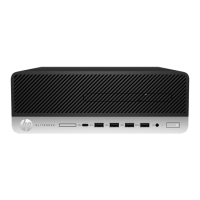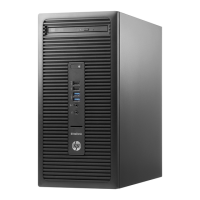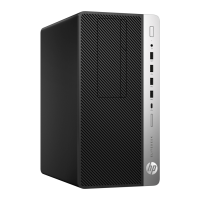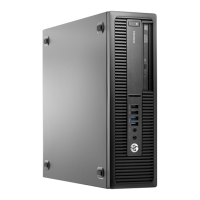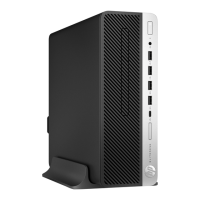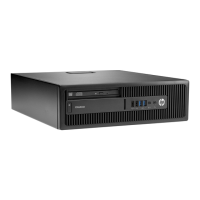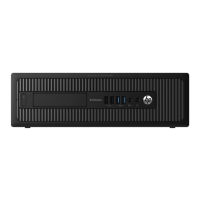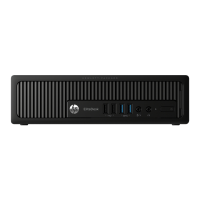Computer Setup—Storage
NOTE: Support for specific Computer Setup options may vary depending on the hardware
configuration.
Table 7-2 Computer Setup—Storage
Option Description
Device Configuration Lists all installed BIOS-controlled storage devices.
When a device is selected, detailed information and options are displayed. The following options
may be presented:
●
Hard Disk: Size, model, firmware version, serial number, connector color, SMART category.
●
CD-ROM: Model, firmware version, serial number, connector color (not included for USB CD-
ROM).
●
Diskette: Model and firmware version.
NOTE: Displays for USB diskette drives.
Storage Options SATA Emulation
Allows you to choose how the SATA controller and devices are accessed by the operating
system. Supported options include: IDE, RAID, and AHCI (default).
CAUTION: SATA emulation changes may prevent access to existing hard drive data and
degrade or corrupt established volumes.
IDE Mode- This is the default and most backwards-compatible setting of the options. Operating
systems usually do not require additional driver support in IDE mode. Use this option for "normal"
(non-RAID) configurations
RAID - Allows DOS and boot access to RAID volumes. Use this mode with the RAID device driver
loaded in the operating system to take advantage of RAID features.
AHCI Mode (default option) - Allows operating systems with AHCI device drivers loaded to take
advantage of more advanced features of the SATA controller.
NOTE: The RAID/AHCI device driver must be installed prior to attempting to boot from a RAID/
AHCI volume. If you attempt to boot from a RAID/AHCI volume without the required device driver
installed, the system will crash (blue screen). RAID volumes may become corrupted if they are
booted to after disabling RAID.
Removable Media Boot
Enables/disables ability to boot the system from removable media. Default is enabled.
Boot Order Allows you to:
●
UEFI Boot Sources: Specify the order in which EFI boot sources (such as a internal hard
drive, USB hard drive, USB optical drive, or internal optical drive) are checked for a bootable
operating system image. Each device on the list may be individually excluded from or
included for consideration as a bootable operating system source.
EFI boot sources always have precedence over legacy boot sources.
●
Legacy Boot Sources: Specify the order in which legacy boot sources (such as a network
interface card, internal hard drive, USB optical drive, or internal optical drive) are checked for
a bootable operating system image. Each device on the list may be individually excluded
from or included for consideration as a bootable operating system source.
Specify the order of attached hard drives. The first hard drive in the order will have priority in
the boot sequence and will be recognized as drive C (if any devices are attached).
116 Chapter 7 Computer Setup (F10) Utility
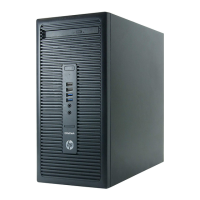
